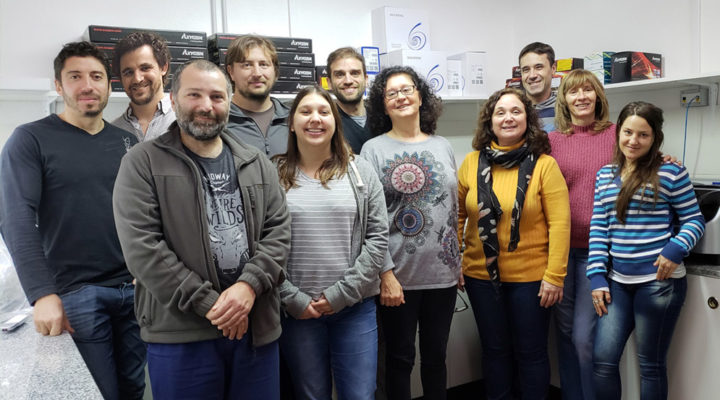AGRARIAN, ENGINEERING AND MATERIAL SCIENCES
Great impact research for agriculture
Scientists managed to obtain the sequenced genoma and the first genetic map of Eragrostis curvula.
The study was conducted by a group of researchers and fellows of the Center of Renewable Natural Resources of the Semi-arid Zone (CERZOS, CONICET-UNS), the Department of Agronomy of the Universidad Nacional del Sur (UNS) and colleagues from the city of Rosario, Italy and the UK. This research team managed to describe the sequenced genome of Eragrostis curvula and obtained the first genetic map of this species, in which they were able to position the conditional region of its way of asexual reproduction by means of seeds called apoximis.
The discovery, which was recently published in Scientific Reports and Frontiers in Plant Science, is the result of a project led by Dr. Viviana Echenique, CONICET principal researcher and director of CERZOS, one of the implementation units of CONICET in Bahia Blanca.
“This achievement will allow us to enhance our knowledge on the genomic region that conditions the apomixes and the metabolic pathways that are involved. This will lead the way to its transfer to crops of great economic interest,” Echenique says.
The apoximis works in individuals genetically identical to the plant that originated it, that is, maternal clones. The transference through genetic engineering of this mode of reproduction to crops important at an economic level could redound to fixation and stabilization of desirable characteristics for generations such as hybrid vigor, increments in the yields, decrease in the collecting and production costs, reduction of the time of the improvement and avoid the risks of the transmission of phytopathogen. Some crops that can benefit from this technology are: corn, wheat, rice, potatos, garlic and sugar cane.
The study to obtain the genome sequencing and the genetic map was conducted with cutting edge technology. The species selected to carry out the project was Eragrostis curvula (Schrad.) Nees. “These are morphologically diverse plants with a wide genetic potencial to improve the characteristics about resistance to drought, cold, productivity and palatability,” Echenique states. This is a forage grass grown in the temperate semi-arid zone of Argentina.
The combination of the genome and the genetic map will delimit the conditioning region of the apomixis and study its architecture and gene composition. The research work continues. The scientists have focused on this genomic region for which they have already sequenced two other apomytic tetraploid materials and have candidate genes for the study. At the same time, the team advances in the development of a patent related to the project.
About the study:
Diego Zappacosta. Associate researcher. CERZOS.
Jimena Gallardo. Doctoral fellow. CERZOS.
José Carballo. Doctoral fellow. CERZOS.
Mauro Meier. Asociación de Cooperativas Argentinas.
Juan Manuel Rodrigo. Associate profesional. CERZOS.
Cristian A. Gallo. Associate professional. CERZOS.
Juan Pablo Selva. Assitant researcher. CERZOS.
Juliana Stein. Professor UNR. IICAR.. IIICAR.
Emidio Albertini. Professor Università degli Studi di Perugia, Italy.
Viviana Echenique. Principal researcher. CERZOS.
Bruno Santos. Researcher National Institute of Agricultural Botany (NIAB) , UK.
Ingrid Garbus. Independent researcher. CERZOS.
Alejandra Díaz. Principal professional. CERZOS.
Mario Caccamo. Director NIAB, UK.
Pía Squarcia – CCT Bahía Blanca
References
Zappacosta, D. C., Gallardo, J. A., Carballo, J., Meier, M. S., Rodrigo, J. M., Gallo, C. A., … & Echenique, V. C. (2019). A high-density linkage map of the forage grass Eragrostis curvula and localization of the diplospory locus. Frontiers in Plant Science, 10, 918. https://doi.org/10.3389/fpls.2019.00918
Carballo, J., Santos, B. A. C. M., Zappacosta, D., Garbus, I., Selva, J. P., Gallo, C. A., … & Echenique, V. (2019). A high-quality genome of Eragrostis curvula grass provides insights into Poaceae evolution and supports new strategies to enhance forage quality. Scientific reports, 9(1), 10250. https://doi.org/10.1038/s41598-019-46610-0
